Today on the blog, I’ll show you the quick and easy way to make a black walnut tincture along with useful ways to use it!
This page may contain affiliate links, which means if you purchase through my links I get a small commission, but it doesn’t cost you anything extra. Thank you for supporting my blog!
We have a big ole black walnut tree in our backyard. We were so excited when we first moved to our home. I couldn’t wait to harvest all the walnuts! I did a little research on how and when to harvest them and the kids and I picked loads and loads of black walnuts. Somehow, I totally missed the important fact that when working with black walnuts, it’s a very good idea to wear gloves
….and old clothes
…and old shoes.
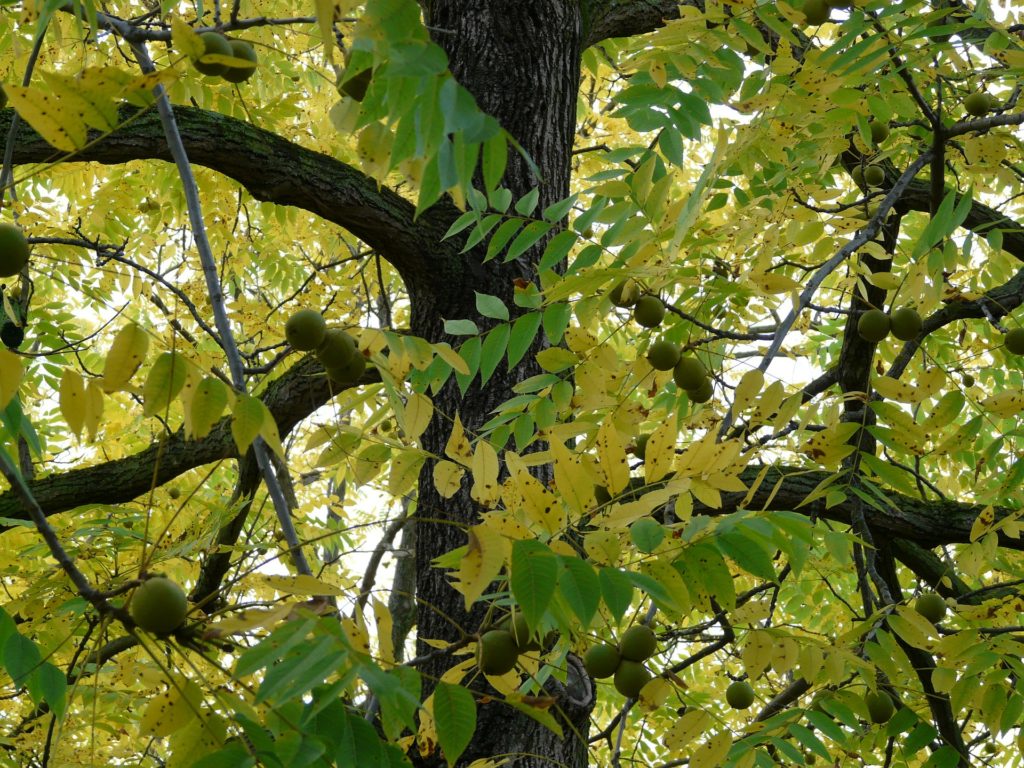
Little did we know back then that black walnut contains juglone and tannins, which are natural dyes. When you remove the green hull, the juice will stain anything and everything it comes in contact with! Our hands were stained a dark yellow for weeks (yes, weeks!) and since we were stepping on dropped walnuts, so were our shoes and the hems of our pants. Of course, as small children do, my kids were constantly trying to wipe “the dirt” off on their clothes!
Fast forward several years, we’ve learned our lesson and we harvest black walnut every year without incident! Black walnut has become a staple in my apothecary and we use it for all sorts of things (read on.) We even healed my daughter’s cavities with it!
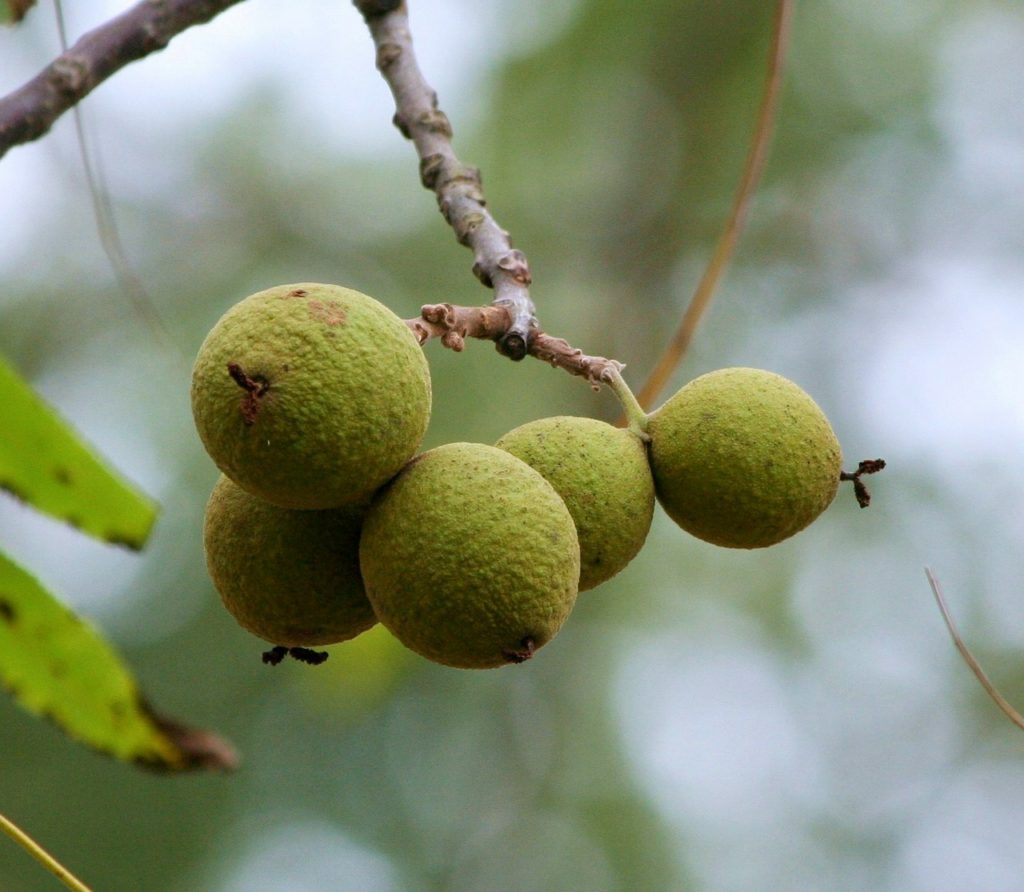
Uses and Benefits of Black Walnut
Black walnut has a long history in herbal medicine (the hulls specifically.) It is most commonly known for being a main ingredient (along with wormwood and cloves) as a natural parasite treatment. It is anti-fungal and antiviral. It also relieves inflammation and irritation.
Used Externally:
-
treats athlete’s foot, ringworm and other fungal infections of the skin
-
treats acne, eczema, psoriasis, warts, cold sores and herpes
-
used as a natural hair dye
Used Internally:
-
soothes upset stomachs and relieves both constipation and diarrhea
-
treats candida overgrowth
-
has certain anti-cancer properties
-
rids the body of parasites and intestinal worms
-
gargling with black walnut extract can sooth sore throats
-
may restore tooth enamel, heal cavities and relieve tooth pain and sensitivity
-
may help relieve excess sweating
Black walnut should not be used during pregnancy.
**If you’d rather purchase black walnut tincture than make it yourself, I recommend this brand .
.
What is a Tincture?
A tincture is a concentrated liquid extract of herbs. It is one of the most popular ways to take herbal medicines internally. Tinctures are typically made with alcohol but can also be made with apple cider vinegar or food grade vegetable glycerin
or food grade vegetable glycerin .
.
Tinctures made with alcohol typically last for many years, whereas those made with glycerin or apple cider vinegar will not last as long. Glycerin tinctures will typically last 2-3 years, whereas tinctures made with apple cider vinegar will last at least a year, probably more according to Rosemary Gladstar. Tinctures made with glycerin and apple cider vinegar are also not as a strong as those made with alcohol. Tinctures are typically consumed by the dropper-full in a small glass of water.
Harvesting Black Walnuts
For your tincture, you want to harvest your black walnuts directly from the tree when they are green and slightly soft. For those in the northeast, that’s usually mid to late August through early September.
How To Make a Black Walnut Tincture
You’ll need:
-
1 quart wide mouth jar with lid
** See recipe notes.
-
1 pint or regular quart jar with lid for storing your completed tincture
-
Tincture bottle with dropper
-
Approximately 8-12 fresh black walnuts with green hulls
-
Approximately 2 cups 80-100 proof vodka, apple cider vinegar
or food grade vegetable glycerin
Instructions:
-
Place your black walnuts (whole) in a wide mouth glass jar. ** See recipe notes in case you missed WHY we are not chopping our black walnuts!
-
Pour enough vodka (or apple cider vinegar or glycerin) over the black walnuts to completely cover them by 2-3 inches then seal your jar with a tight fitting lid.
-
Let the black walnuts soak in a warm spot, out of direct sunlight for 4-6 weeks. Shake your jar often, every day if possible.
-
After 4-6 weeks, strain the black walnuts from the liquid. Discard the black walnuts. Fill a small tincture bottle (with a dropper) for daily use and pour the remaining tincture in a clean glass jar. Label and date your tincture. Store in a cool, dark place.
Note from Jen:
Apple cider vinegar will cause your metal caps to rust. If using apple cider vinegar in your tincture, use either a plastic lid or place a piece of plastic wrap between the jar and the metal lid.
Typically, we chop herbs to be put in a tincture; however, black walnuts contain juglone and tannins, which once you remove the hull, will stain everything it comes in contact with. So… we will be leaving our black walnuts whole for our tincture.
Did you try this recipe? Please let me know by leaving a comment below or sharing a comment or picture on my Facebook Page or on Instagram .
Are you hungry for more home remedies? You might enjoy the FREE E-BOOK, “Three Home Remedies You Can Make in an Afternoon” and some of these popular posts:
How to Make an All Purpose Salve with Plantain Herb
How to Make Fire Cider
How to Make Sage Honey ( For Sore Throat & Coughs)
Healing Herbal Teas for When You are Sick
How to Make Homemade Apple Cider Vinegar
How to Make Echinacea Tincture & Throat Spray
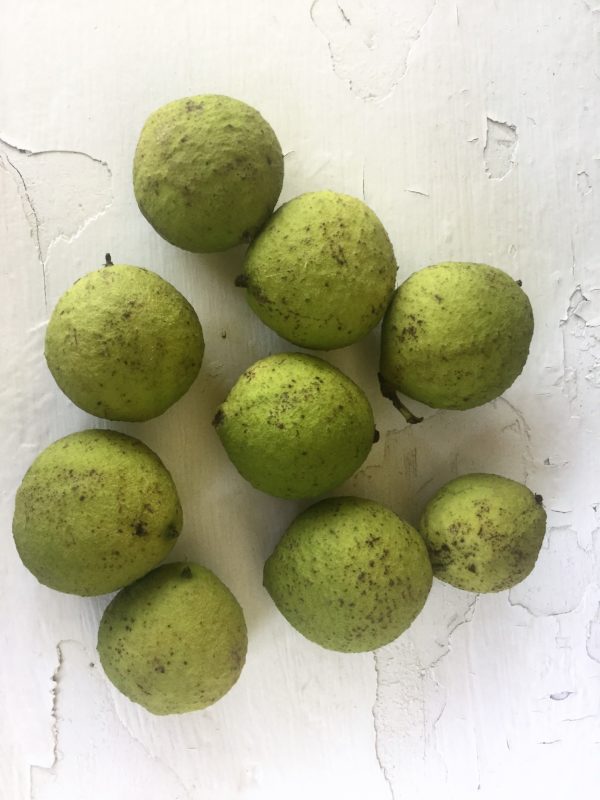
| Prep Time | 5 minutes |
| Passive Time | 4-6 weeks |
| Servings |
cups
|
- 11-12 Fresh black walnuts with green hull
- 2 cups 80-100 proof vodka or apple cider vinegar or food grade vegetable glycerin
Ingredients
|

|
- Place your black walnuts (whole) in a wide mouth glass jar. ** See recipe notes
- Pour enough vodka (or apple cider vinegar or glycerine) over the black walnuts to completely cover them by 2-3 inches then seal your jar with tight fitting lid.
- Let the black walnuts soak in a warm spot, out of direct sunlight for 4-6 weeks. Shake your jar often, every day if possible.
- After 4-6 weeks, strain the black walnuts from the liquid. Discard the black walnuts. Fill a small tincture bottle (with a dropper) for daily use and pour the remaining tincture in a clean glass jar. Label and date your tincture. Store in a cool, dark area.
Apple cider vinegar will cause your metal caps to rust. If using apple cider vinegar in your tincture, use either a plastic lid or place a piece of plastic wrap between the jar and the metal lid.
Typically, we chop herbs to be put in a tincture; however, black walnuts contain juglone and tannins, which once you remove the hull, will stain everything it comes in contact with. So, we will be leaving our black walnuts whole for our tincture.


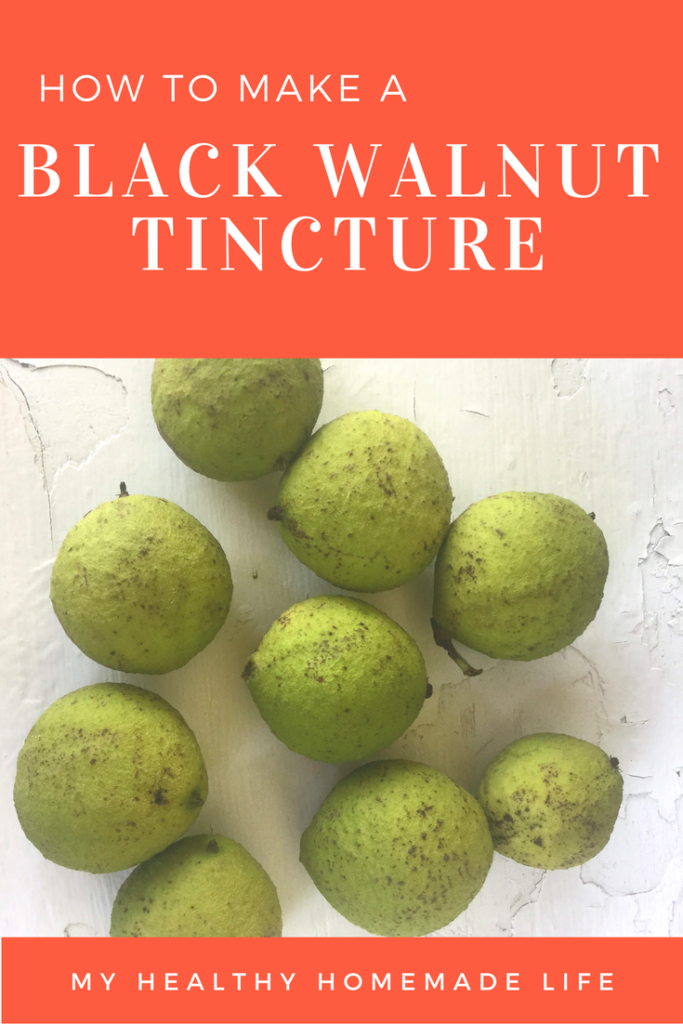
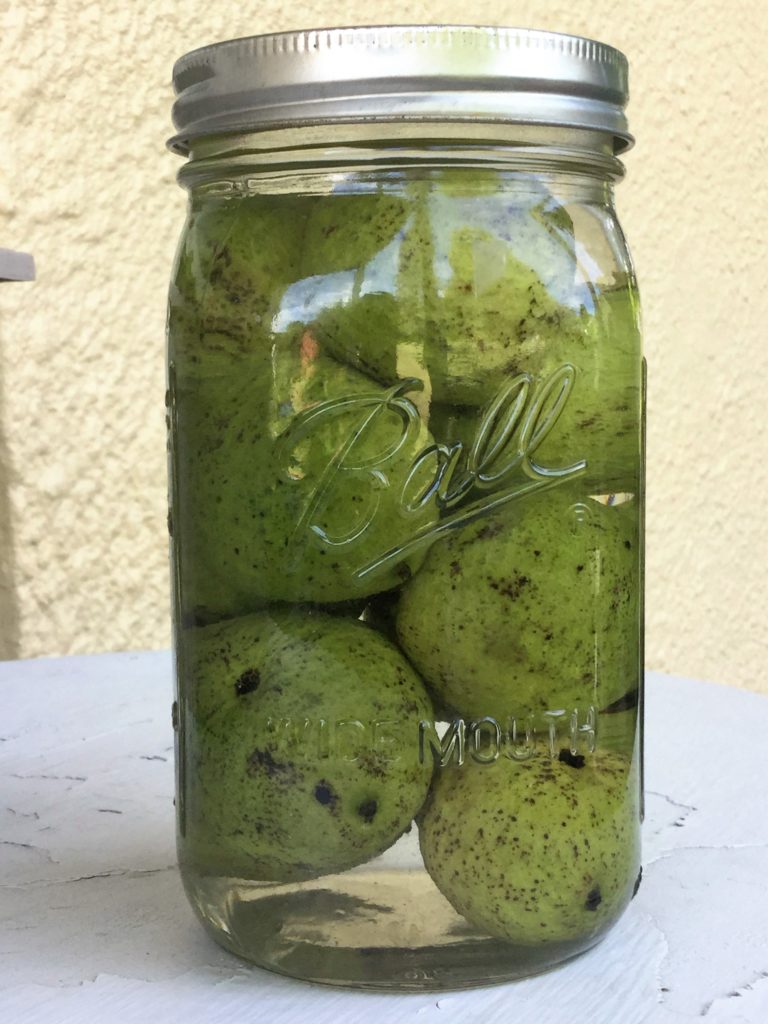
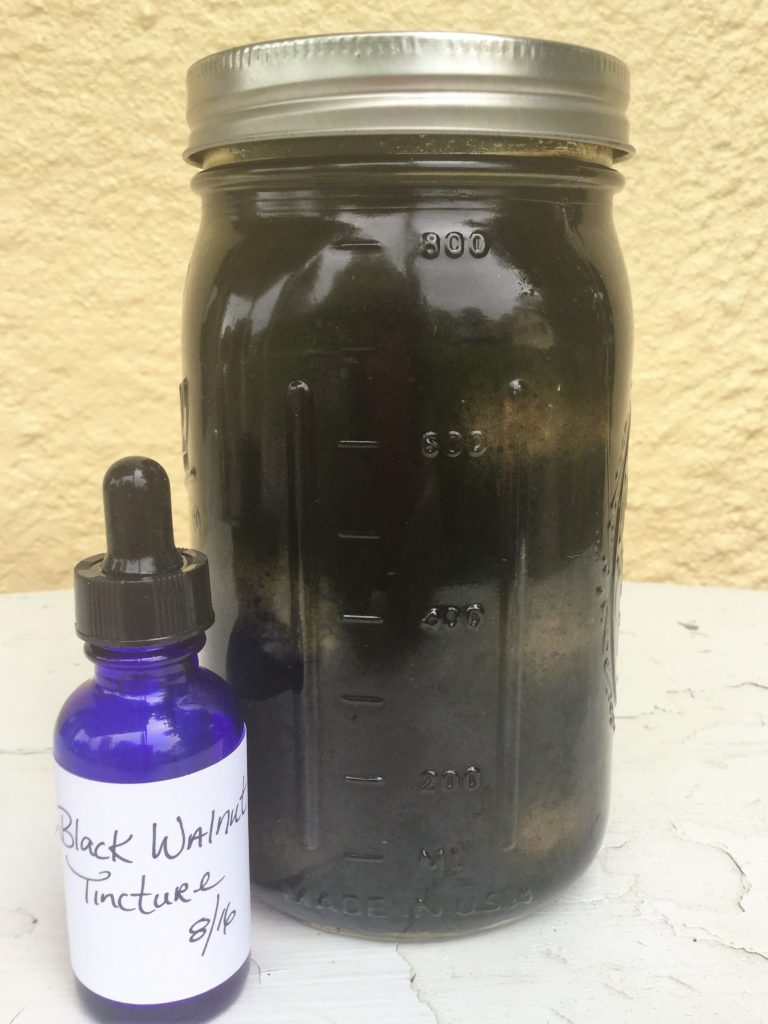



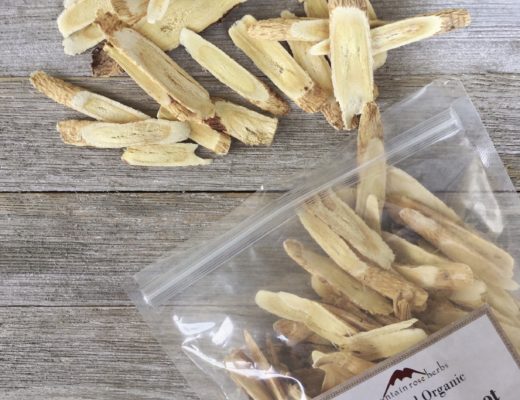
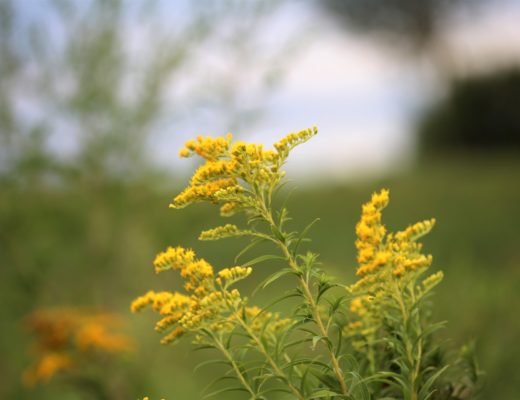

31 Comments